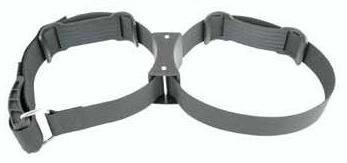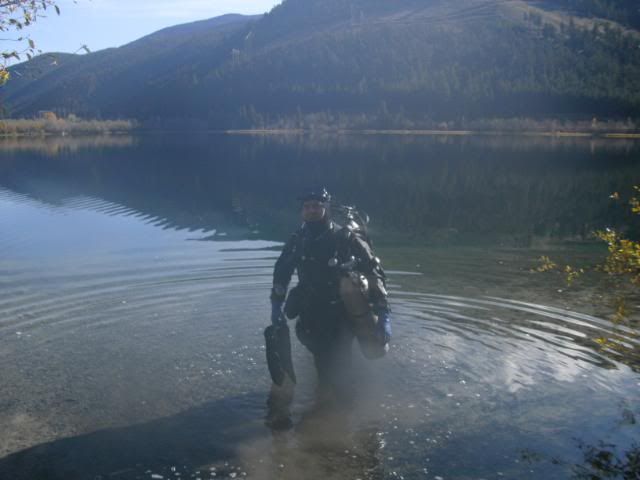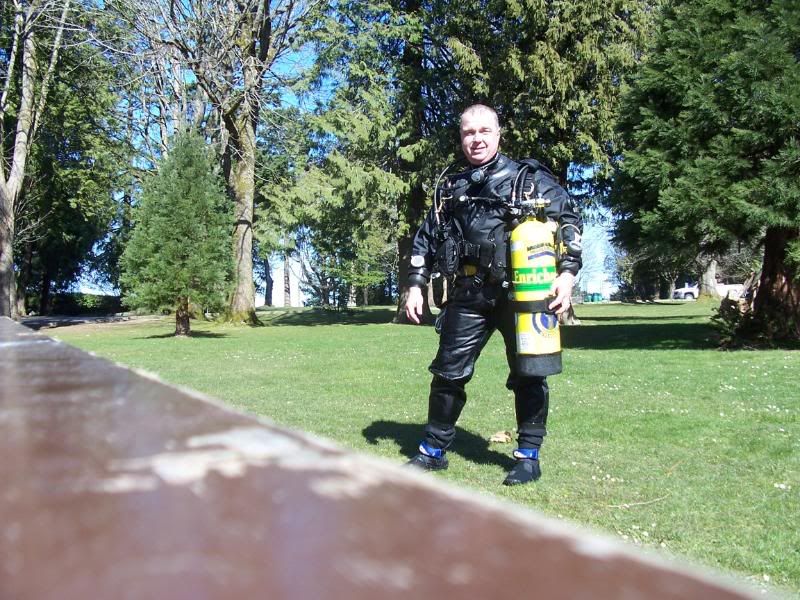I'm curious - when tech divers dive with two tanks at their sides, how large are those tanks and how badly do those tanks affect their trim and balance?
Basically, a set of doubles with solid backplate, provides a much more stable 'platform' from which to hang stages.
The doubles themselves are more stable than a regular BCD. They sit closer to the back and (
with steel bands) are held firmly in place. They tend to balance the load across the length and breadth of the divers' back nicely.
Imagine diving with your current BCD and tank. Now imagine slinging something that is several lbs heavier and lighter (as you use the air) onto one side of your torso....
If you are diving with a wing... then you can transfer air into the corresponding side of the wing to offset the buoyancy of what you have slung. You can't do that easily with a jacket BCD.
I was thinking I could even do something like carry two smaller 60s on each side of me if balance was a real issue.
You might as well go down the route of getting a 'sidemount' kit. These are getting more popular now and access to appropriate training courses is easier.
If you were to carry 2x 60s, plus your main cylinder, then wouldn't you be defeating the primary objective of lowering costs??
Which redundancies would I not have that an isolation manifold would give me?
An isolated manifold enables you to access the combined total of both doubles cylinders from either regulator. In the event of a regulator failure, you can shut down that regulator, but still access all your gas from the other regulator.
With indie cylinders, any failure (tank or regulator) will lead to a total loss of gas from the cylinder concerned.
Basically, an isolated manifold provides a diver with many more options on how to deal with a gas loss emergency. The primary advantage is that it preserves access to the gas in both cylinders in nearly all circumstances (
the exception being a failure where the valve screws into the cylinder).
It isn't
that costly to set up a system of doubles.
Regulator:
You have a 1st stage, LPI, spg and 2x second stages.
You need an extra 1st stage (
and spg for indie cylinders)
Remove your AAS and put it onto your new 1st stage, along with spg (
if reqd).
BCD (
if used):
If your BCD is suitable for doubles, you just need to buy a doubles adaptor. These aren't too costly and are simple to fit as a replacement for your existing cam band.
Doubles Adaptor (
to fit as camband). Cost approx $60-80.
Single Tank Wing (
if used):
You have: Single Wing, Backplate, Harness, STA.
You need: Double Wing, SS tank bands.
Dismantle your wing from the backplate and harness (
2 mins). Replace with doubles wing and re-assemble finishing with the tank bands, rather than STA. Total change-over time.. less than 5 mins.
Bands, Wings and spare 1st stages are relatively cheap...and can often be bought at low cost via Ebay/Craigs List.







